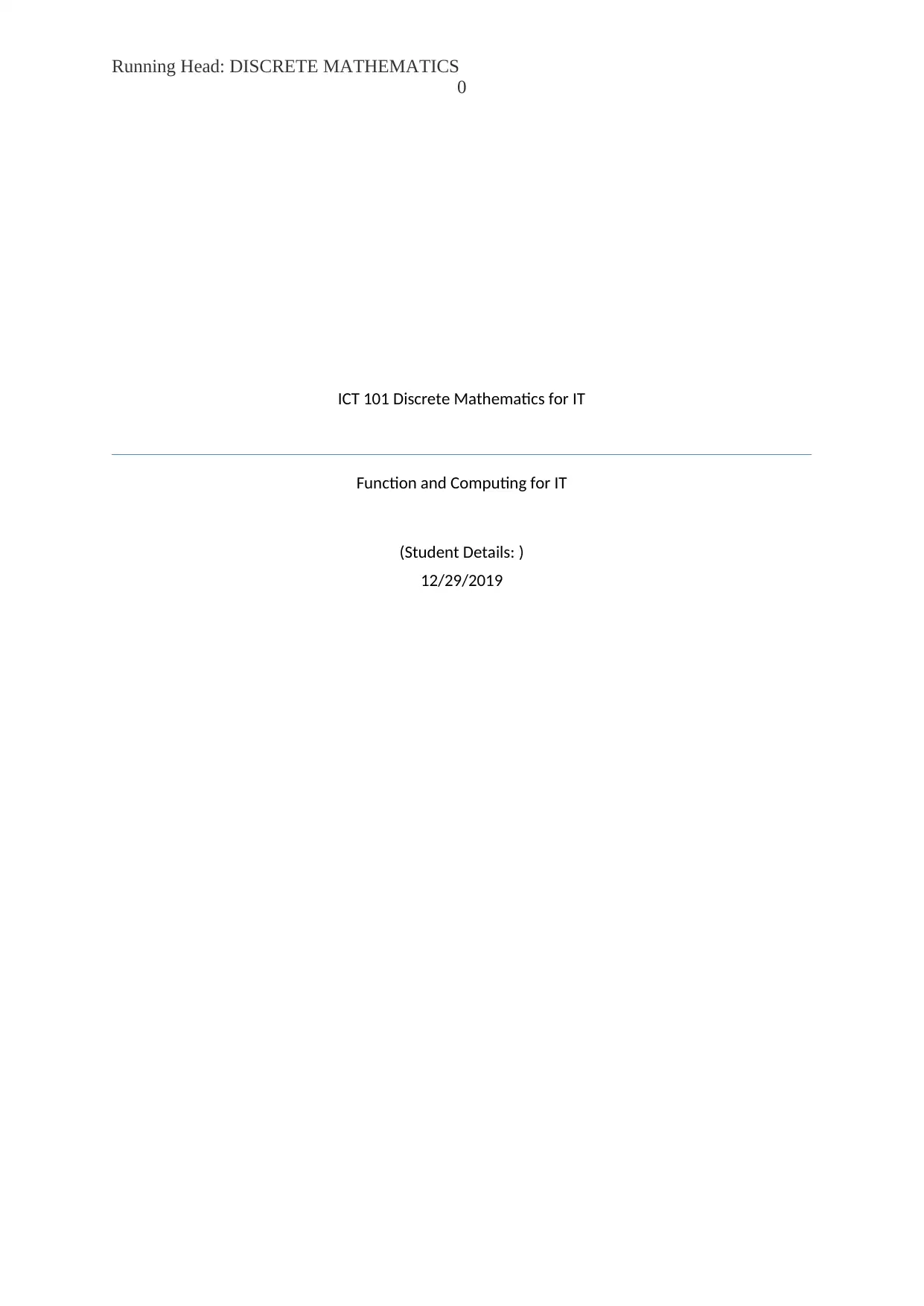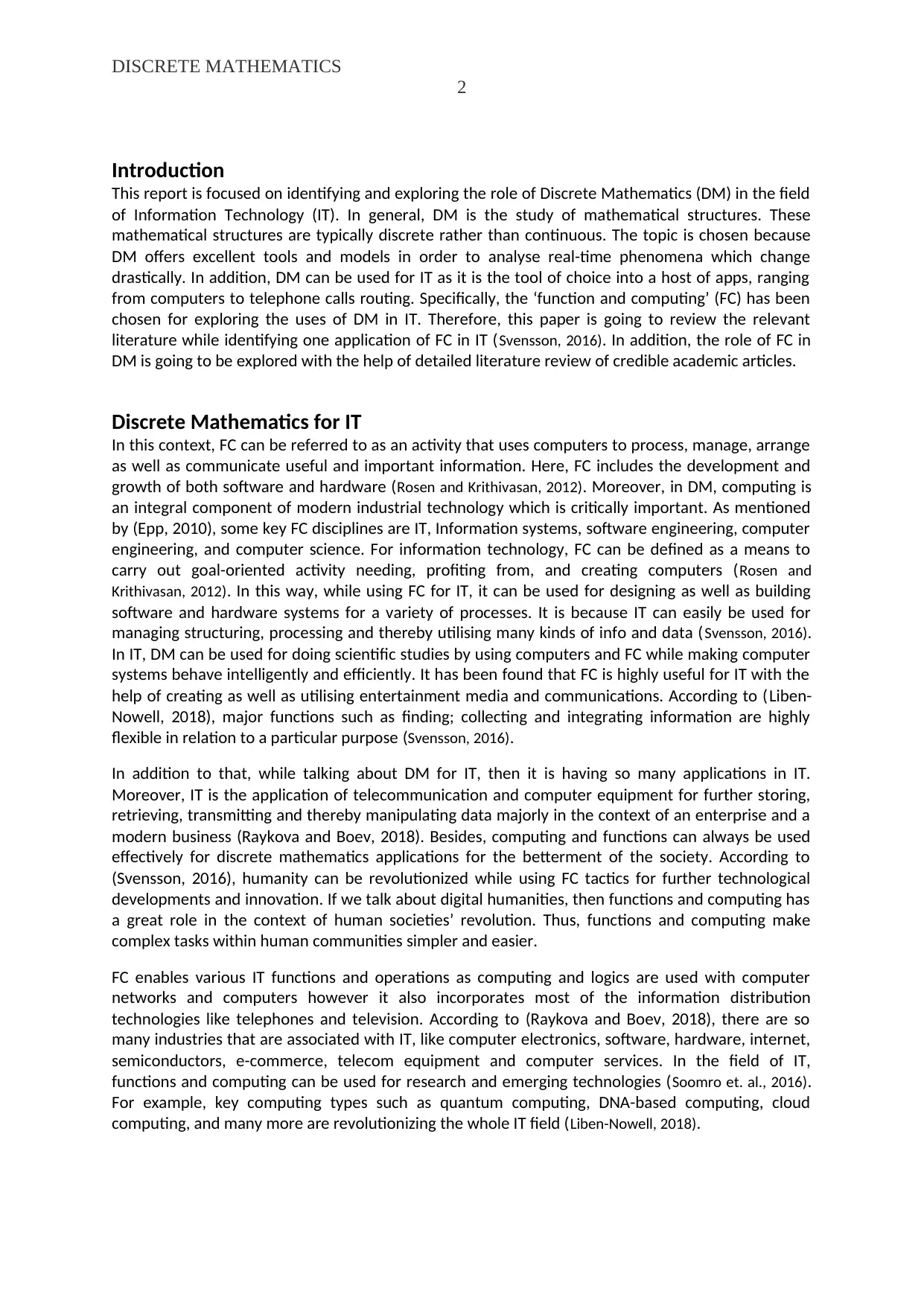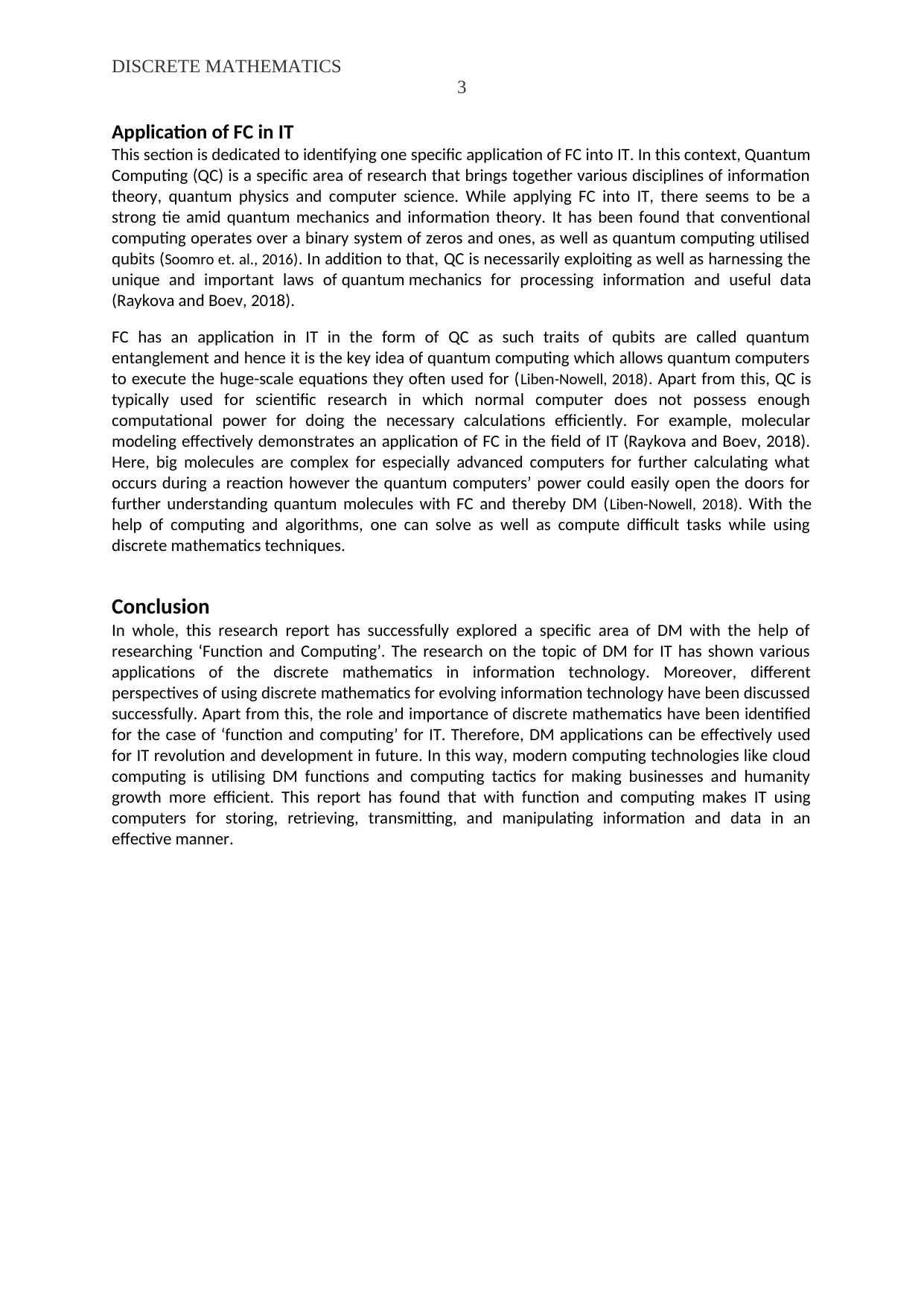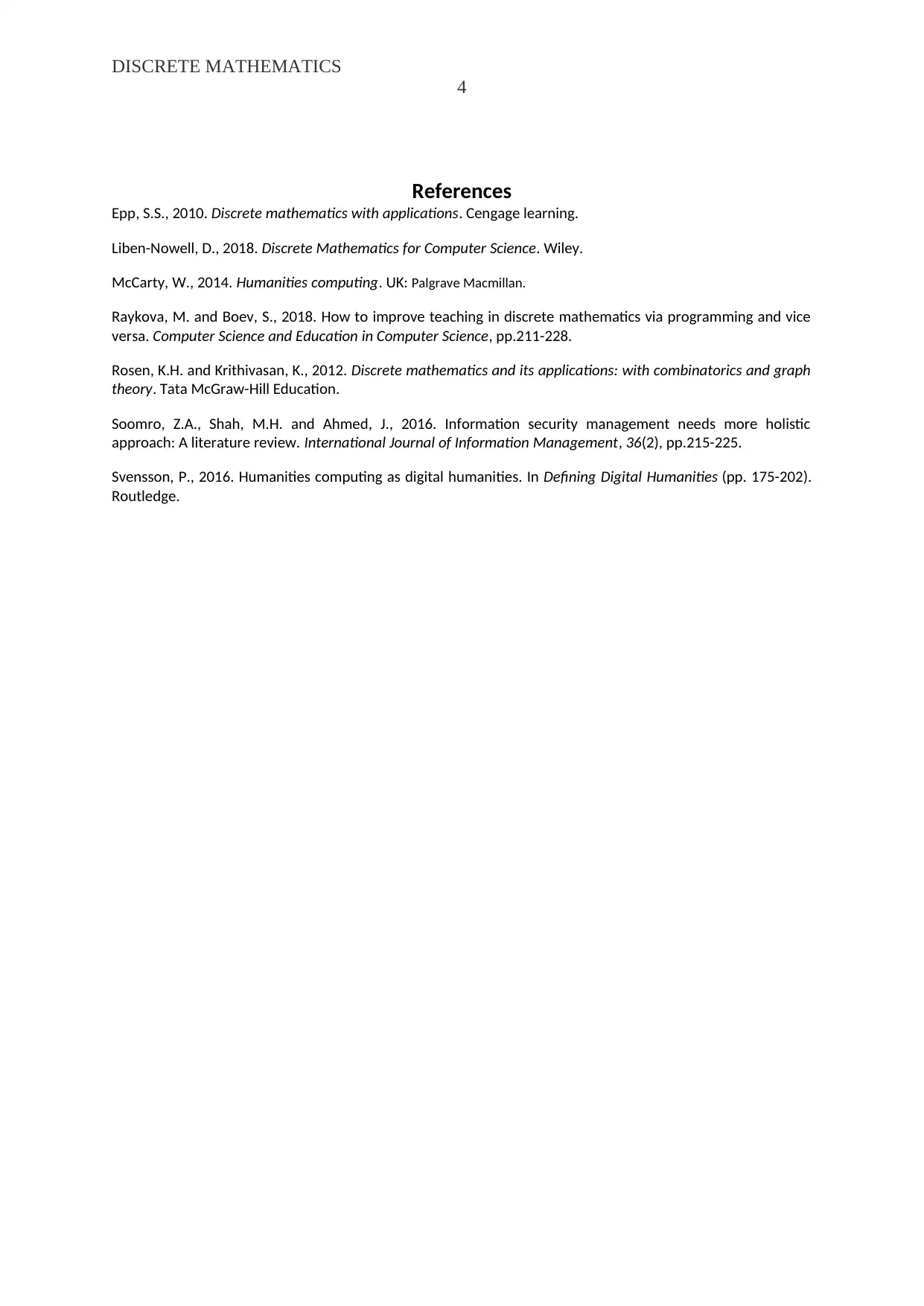ICT101: Discrete Mathematics for IT - Function and Computing
VerifiedAdded on 2022/09/01
|5
|1406
|21
Report
AI Summary
This report examines the role of Discrete Mathematics (DM) within Information Technology (IT), focusing on the application of 'function and computing' (FC). It begins with an introduction to DM and its relevance to IT, emphasizing its use in analyzing dynamic real-world phenomena and its application in various IT domains, including hardware and software development. The report then delves into the core concepts of FC in the context of IT, highlighting its importance in processing, managing, and communicating information, along with its relation to key disciplines such as computer science and software engineering. A literature review supports the discussion, referencing several academic articles to explore the application of FC. Furthermore, the report identifies Quantum Computing (QC) as a specific application of FC in IT, discussing how QC leverages quantum mechanics for information processing and its potential in scientific research. The conclusion summarizes the applications of DM for IT, emphasizing the significance of FC in making IT more efficient.
1 out of 5











![[object Object]](/_next/static/media/star-bottom.7253800d.svg)